The Maleficent Seven
In the 1960 movie The Magnificent Seven, Cajun gunslinger Chris Adams (played by Yul Brynner) and his six fellow gunmen were good guys, hired to protect a small village in Mexico from a group of marauding bandits. The seven prosecution medical experts in Lucy’s trial were not “good guys”. They were The Maleficient Seven.
maleficent [ muh–lef–uh-suhnt ] adjective
doing evil or harm; harmfully malicious: maleficent destroyers of reputations
https://www.dictionary.com/browse/maleficent
It has been suggested that ‘incompetent counsel’ should be grounds for Lucy’s appeal – many have wondered why the defence did not do a better job of rebutting the arguably flawed testimony of the seven prosecution medical experts (see www.rexvlucyletby2023.com) or allowed Lucy during police questioning to be asked if she thought someone had poisoned one of the babies with insulin (she was not qualified to answer that so the solicitor should have immediately nipped that in the bud but didn’t).
It also seems that another grounds might be the judge’s decision during the trial to rule as a Contempt of Court the www.rexvlucyletby2023.com site which robustly set out the science that supported non-malevolent interpretations of the exhibits (X-rays, blood tests) and professional witness testimony (strange rashes, collapses etc). Statistician and miscarriage campaigner Richard Gill, who had published links to the website, received a warning letter on 7 July from Cheshire Constabulary, as detailed on his own website (see https://gill1109.com/2023/09/20/contempt-of-court/ ). A second letter he received on 17 July noted that Cheshire Police had also heard from the author of the www.rexvlucyletby2023.com so it seems they were also contacted.
My question would be, how did Judge Goss determine that the www.rexvlucyletby2023.com site was a Contempt of Court? He is not a scientist, so would have had to consult those qualified to determine whether or not it represented robust science (it certainly looked like it did) and therefore whether it was a Contempt of Court and thus inadmissible. The only experts on hand qualified to judge the science in relation to the X-rays (a radiologist and a pathologist) and the blood tests (a haematologist, an endocrinologist, and a biochemist,) were the prosecution experts (the defence expert was a neonatologist). Did he consult experts elsewhere? If he did, who were they and on what basis did they discount the science? If it was the prosecution experts he consulted (the radiologist, the haematologist, the the pathologist, the endocrinologist, and the biochemist) that is a clear conflict of interest. And if the judge did not consult any experts, that seems to be a dereliction of duty. We shall see.
According to https://www.gov.uk/contempt-of-court ,
‘Contempt of court’ happens when someone risks unfairly influencing a court case. It may stop somebody from getting a fair trial and can affect a trial’s outcome.
Contempt of court includes:
- disobeying or ignoring a court order
- taking photos or shouting out in court
- refusing to answer the court’s questions if you’re called as a witness
- publicly commenting on a court case, for example on social media or online news articles
It seems clear that the judge can only have considered the rexv website to be a Contempt of Court of the basis of it having publicly commented on the case. Below is what the gov.uk website has to say on that.
Publicly commenting on a court case
You might be in contempt of court if you speak publicly or post on social media.
For example, you should not:
- say whether you think a person is guilty or innocent
- refer to someone’s previous convictions
- name someone the judge has allowed to be anonymous, even if you did not know this
- name victims, witnesses and offenders under 18
- name sex crime victims
- share any evidence or facts about a case that the judge has said cannot be made public
The rexv website did none of the above.
As for the 5 July letter received by Richard Gill, I am wondering how the rexv website could have been a “flagrant and serious contempt of court” if none of the above applied. Also, the hearing involved the judge, the defence and the defendant, not the prosecution. Might it have been possible that the defence thought the rexv site was a threat to Lucy and thus argued to the judge that it was a Contempt of Court? In which case the judge could simply have agreed. If the defence wanted the rexv site to be admitted as evidence, surely that would have involved the prosecution. Or, more likely, it was the defence that received the information about the rexv site, they showed it to the judge who immediately deemed it a Contempt of Court and thus inadmissible, and this would not have required the involvement of the prosecution.
In relation to ‘incompetent counsel’, putting aside the fact that it is not listed as one of the three specific grounds of appeal in https://www.judiciary.uk/wp-content/uploads/2021/07/Blue-guide-July-2021-Final-1.pdf (see A5 below) and that reference to complaint about conduct of trial representatives is only noted in relation to fresh legal representatives (see A4 below), might it be possible that it was not so much the defence counsel that was incompetent but the defence team’s medical expert, neonatologist Michael Hall? And even then, incompetence may only have played a minor role.
During pretrial discussions between the two teams of experts (at which the lawyers would not have been present) Michael Hall would have been faced with the bank of seven prosecution experts, many of whose testimony he would not have been qualified to rebut. The seven prosecution experts comprised two paediatricians, an endocrinologist, a biochemist, a haematologist, a radiologist, and a pathologist. Michael Hall, a neonatologist, would not have been qualified to rebut anything other than the testimony of the two paediatricians. The issue may thus have been a lack of funding to pay for more defence experts, rather than the incompetence of the one expert the defence team could afford. And clearly legal aid would have been insufficient to engage the required experts.
A4. Applications by fresh legal representatives (CPD IX 39C)
A4-1. (ii) If these queries result in privileged information being included within, or as an attachment, to the grounds of appeal (including but not limited to, explicit or implied complaints about the conduct of trial representatives), then a signed waiver of privilege must also be lodged with the grounds of appeal.
A5. Specific grounds of appeal
A5-1. Applications to call fresh evidence
A5-2. Insufficient weight given to assistance to prosecution authorities
A5-3. Applications based on a change in law
Per Experts and pretenders – examining possible responses to misconduct by experts in criminal trials in england (2020) Freer, in relation to when to call an expert, “the only general requirement is that the expert’s evidence is on matters likely outside of jurors’ knowledge”. In other words, if the only expert testimony the jurors in Lucy’s case heard was from the prosecution side saying that crimes had been committed, probably by Lucy, and that since the testimony was on matters beyond their understanding so they had no choice but to accept it, is it really any wonder that they found Lucy guilty? Perhaps the surprise is that they only found Lucy guilty in relation to 14 of the 22 counts.
Now, in relation to A5-1 above, I understand that new expert testimony that debunks original expert testimony can be deemed fresh evidence and thus grounds for appeal. Might the appeal court judge argue that such experts were available at the time of trial? I’m not enough of an expert to know the answer to that. I do know that the Court of Appeal sets the bar very high. I also know there is precedent in relation to appeals being granted on the basis of new expert testimony.
For example:
Wrongly imprisoned (in 2003 for four murders and three attempted murders of patients under her care) Dutch nurse Lucia de Berk was eventually exonerated (according to statistician Richard Gill who campaigned for her innocence) because the original expert toxicologist, faced with the correct interpretation of the data by a second toxicologist, withdrew their incorrect testimony (they blamed the the public prosecutor and the Court for withholding critical information from them).
As for the UK, in 1997, Anthony O’Doherty was convicted of murder but later cleared by the Court of Appeal (https://www.belfasttelegraph.co.uk/news/ex-supergrass-is-cleared-of-attack/28081422.html). His case and exoneration are described in Court Scrutiny of Expert Evidence (2003):
O’Doherty was convicted in 1997 of aggravated burglary and causing grievous bodily harm with intent, based in part on expert testimony that it was highly probable that his voice was the voice heard on the tape of a 999 call made at the time of the burglary. The expert in question, Mrs. McClelland, used only auditory techniques (essentially, careful listening and comparisons of specific sounds and words) in making her comparisons between the voice of the defendant and the voice on the tape, despite the fact that the vast majority of experts in the field place greater reliance on acoustic techniques (that is, techniques involving spectral and other quantitative analysis by machines of the respective sources). This was the same fact pattern as Robb, in which the Court of Appeal for England and Wales held that the witness was permitted to offer similar testimony. The other evidence against the defendant included the testimony of a policeman familiar with his voice that the voice on the tape was his, the jury’s own comparison of the voice on the tape with that of the defendant, and a series of calls on the victim’s mobile phone to the defendant’s house shortly after the burglary.
Following a referral of the case by the Criminal Cases Review Commission, the Court of Appeal for Northern Ireland, in a judgment by Nicolson, LJ, granted the defendant’s application for the reception of fresh evidence, consisting of testimony from three defence experts and two prosecution experts. The defence experts attacked the technique of relying solely on auditory evidence in voice identification, and also presented their own acoustic analysis which they asserted established that the voice on the tape was not that of the defendant. Although Mrs. McClelland largely supported her trial testimony, the other prosecution expert, Dr. French, could assert no more than that it was “rather more likely than not” that the voice on the tape was that of the defendant, and largely agreed with the defence experts that carrying out both auditory and acoustic analysis was “best practice.” Indeed, Mrs. McClelland herself, despite expressing scepticism about acoustic analysis, now regularly performs such analysis.
Back to witnesses…
There are three types of witness: members of the public, professionals, and experts.
The first two of these witness types attest to their memory of events (“I saw him at the bus stop”, “he was wearing a green jacket”, “I saw a strange rash”, “I was called to repair a sewerage leak”) though professionals can also provide opinion (“I believed the strange rash meant…”).
The third type of witness, the expert, provides their opinion about facts (a blood test or an X-ray) within their area of expertise or about evidence (the testimony of a doctor acting as a professional witness saying they saw a strange rash). Generally speaking, facts are objective (blood tests/X-rays) while evidence, although pertaining to facts (a strange rash) can be subjective (“I saw a strange rash”, “I did not see a strange rash”).
In Lucy’s case, there were two types of witnesses: professional and expert (although the plumber was not a medic, as were almost all the other “non-expert” witnesses, he was still a professional).
The professional witnesses were mostly doctors and nurses who attested to things like who was where, what they saw, what was happening to the babies, etc (the doctors also opined as to their interpretation of what they saw in relation to the babies – the strange rashes, sudden collapses, etc.)
The seven prosecution medical experts (two paediatricians, an endocrinologist, a biochemist, a haematologist, a radiologist, and a pathologist) provided their interpretation (opinion) of the facts/evidence that was relevant to them and their area of expertise (the radiologist would have considered the X-rays, the endocrinologist, the haematologist and the biochemist would have considered the blood tests, the paediatricians would have considered the doctors’ testimony about the strange rashes and sudden collapses, etc).
According to the Crown Prosecution Service:
“Medical evidence” means the evidence of medically qualified persons, including psychiatrists, which is admissible to furnish the court with information outside the knowledge of a judge, bench or jury. Evidence given by a suitably qualified doctor that simply reports the injuries sustained by a victim to an assault is not evidence of opinion and is rarely likely to be disputed…Prosecutors need to be aware that where a doctor expresses a view as to the cause or likely cause of an injury, this is opinion and is subject to CrimPR19, unless an admission can be obtained from the Defence, or the medical evidence is not otherwise disputed (https://www.cps.gov.uk/legal-guidance/expert-evidence).
CrimPR19 refers to Part 19 of https://www.legislation.gov.uk/uksi/2020/759/pdfs/uksi_20200759_en.pdf, “Expert Evidence”.
In relation to expert witnesses, according to Wikipedia (underlining mine):
In England and Wales, under the Civil Procedure Rules (CPR), an expert witness is required to be independent and address his or her expert report to the court. A witness may be jointly instructed by both sides if the parties agree to this, especially in cases where the liability is relatively small. Under the CPR, expert witnesses may be instructed to produce a joint statement detailing points of agreement and disagreement to assist the court or tribunal. The meeting is held quite independently of instructing lawyers, and often assists in resolution of a case, especially if the experts review and modify their opinions. When this happens, substantial trial costs can be saved when the parties to a dispute agree to a settlement. In most systems, the trial (or the procedure) can be suspended in order to allow the experts to study the case and produce their results. More frequently, meetings of experts occur before trial. Experts charge a professional fee which is paid by the party commissioning the report (both parties for joint instructions) although the report is addressed to the court. The fee must not be contingent on the outcome of the case. Expert witnesses may be subpoenaed (issued with a witness summons), although this is normally a formality to avoid court date clashes.[26] From: https://en.wikipedia.org/wiki/Expert_witness
According to Court Scrutiny of Expert Evidence (2003):
Although English law imposes some limits on the subject matters of expert evidence, it has traditionally imposed very few limits on the methodology or reliability of expert testimony. This position stands in marked contrast to the law of the United States, where this issue has been prominent both in the case law and in scholarly commentary, and where court scrutiny of expert testimony is more exacting.
Experts and pretenders – examining possible responses to misconduct by experts in criminal trials in england (2020) Freer has this to say about “rogue experts”:
Therefore a more desirable solution would be to uncover rogue experts before they get as far as giving evidence. To achieve this I would suggest a peer-review college, where acknowledged academic and practitioner experts in the relevant area were used to peer-review the work of the expert whom a party hoped to instruct. Once that individual had been peer-reviewed that process would not need to be carried out again unless the expert asked for it, on the basis that they had assimilated further or different knowledge since their previous assessment. Any assessment could set out the topics on which an expert would be suitably experienced and knowledgeable about to give advice and/or evidence, on the basis of peer review of their published work and practical experience.
Two other interesting papers about expert evidence are Explaining and trusting expert evidence – what is a sufficiently reliable scientific basis (2020) Ward and Scientific disciplines and the admissibility of expert evidence in courts (2022) O’Brien et al.
The paper Variability in the analysis of a single neuroimaging dataset by many teams also describes how experts’ interpretations of the same data can vary, something Lucy’s defence may be faced with if it gets a chance to rebut the prosecution’s experts’ testimony.
In Lucy’s trial, it seemed that little weight was given to the original postmortems that found no evidence of harm (why the consultants did not alert the pathologist to their suspicions about Lucy when they fist had them in late June/early July 2015 is another question entirely).
Below are all the references in the Chester Standard reports of the trial to the key individuals relating to pathologists, namely the coroner Nicholas Rheinberg, the original pathologist George Kokai, and the prosecution’s expert pathologist Andreas Marnerides.
What I think comes across clearly is how little mention there was at trial of Rheinberg and Kokai, and how the prosecution’s expert pathologist Marnerides disputed everything in the original postmortems.
Title: Mr
First name: Nicholas
Last name: Rheinberg
Gender: M
Group: Legal
Subgroup: Crown
Role/job: Coroner
Employer/association: HM Coroners, Cheshire
Recording a verdict of misadventure, coroner Nicholas Rheinberg told the inquest in Chester in February 2015: ‘There were very considerable signs [the tube was incorrectly positioned] and I find it surprising these signs were not realised.’ https://www.dailymail.co.uk/news/article-4518212/Baby-deaths-Countess-Chester-Hospital-probed.html
Letby also managed to slip through the gaps in the coronial system. Hospital managers asked the Cheshire coroner, Dr Nicholas Rheinberg, to investigate the seven baby deaths in February 2017. The coroner declined, according to sources, telling the trust he was not a “quality-assurance service” for the NHS. Rheinberg retired that year. https://www.thetimes.co.uk/article/damning-email-told-of-chaos-on-lucy-letby-ward-kd9s28k5f
Title: Dr
First name: George
Last name: Kokai
Gender: M
Group: Medical
Subgroup: Doctor
Role/job: Pathologist
Employer/association: Alder Hey
Child C
Mr Myers says, for the case of Child C, he looks at the post-mortem evidence of whether there was a gastrointestinal blockage. He refers to the agreed evidence by the pathologist, Dr Kokai, who conducted the post-mortem examination, who recorded a ‘distended colon’ for Child C, which was not normal. He says Dr Marnerides refused to accept this evidence, who said the bowel was ‘normal’. https://www.chesterstandard.co.uk/news/23615797.recap-lucy-letby-trial-june-27—defence-closing-speech/
Dr George Kokai carried out a post-mortem examination for Child C. He noted a distended colon, which Dr Marnerides said was “not an abnormality”. He said the potential complication was a twisted colon that would lead to “obvious” symptoms of pain. There was evidence of “acute pneumonia”. Dr Marnerides said one could die of pneumonia or with penumonia. He said the former was plausible, but upon hearing further clinical evidence, he reviewed his opinion. He said babies dying of penumonia experience gradual deterioration, which was not the case here. He said he revisited the cause of death, viewing images of a distended stomach, and no evidence of NEC. Prof Arthurs said the small bowel was dilated. Dr Marnerides observed a dilated stomach and bowel, and noted Child C had been off CPAP for over 12 hours. No air had been obtained from aspirates before the collapse. He had never known CPAP belly being the cause of an arrest in a baby in his years of experience. He said, in his opinion, the cause of Child C’s collapse was of excessive air administered into the stomach via the naso-gastric tube. https://www.chesterstandard.co.uk/news/23628455.recap-lucy-letby-trial-july-3—judges-summing/
Child I
Dr George Kokai carried out a post-mortem examination of Child I. Dr Andreas Marnerides was dependent on the report. Dr Marnerides said Child I did not have NEC. He was “very sceptical” that Child I died of natural causes. He said the collapses were more likely to be excessive air administered to the stomach, via the NGT. The defence say a similar event happened for Child I on August 23, a day when Letby was not on duty. https://www.chesterstandard.co.uk/news/23634101.recap-lucy-letby-trial-july-5—judges-summing/
Child O
Dr George Kokai carried out a post-mortem examination [of Child O]. Dr Andreas Marnerides reviewed, and said injuries to the liver were the result of impact trauma. He said during treatment, small bruises could be caused to the surface of the liver, and would not be extensive. He says the liver is not in an area where CPR is applied. He has only seen this kind of injury to the liver before in children, not babies, from accidents involving bicycles. He did not think CPR could produce this extensive injury to the liver, and has never heard of this sort being accepted as such. He also found internal gastric distention, and concluded there had been an air embolus. Prof Arthurs also referred to radiograph images, taken post-mortem. He said the gases were an ‘unusual finding’. https://www.chesterstandard.co.uk/news/23636819.recap-lucy-letby-trial-july-6—judges-summing/
Title: Dr
First name: Andreas
Last name: Marnerides
Gender: M
Group: Medical
Subgroup: Doctor
Role/job: Patholigist (paediatric)
Employer/association: Guy’s and St Thomas’ NHS Foundation Trust (https://www.guysandstthomas.nhs.uk/our-consultants/andreas-marnerides)
General reference
He [Myers] says of Dr Andreas Marnerides, a pathologist, “is not a clinician, is not a paediatrician or a neonatologist”, which “puts some limits [on his expertise]”. He says his expertise is on what happens following a death, not in life. He says Dr Marnerides is “reliant” on the evidence of others, something which he agreed. He says he made a lot of reference to Dr Dewi Evans, and it is “too late in the day” to “insinuate” it is someone else. https://www.chesterstandard.co.uk/news/23613176.recap-lucy-letby-trial-june-26—defence-closing-speech/
Child A
[A Original pathology: The case was referred to the coroner and the cause of Child A’s death was ‘unascertained’ at the time.]
Dr Marnerides said it appeared Child A, a twin boy, died as a result of an injection of air into his bloodstream. https://www.chesterstandard.co.uk/news/23422288.lucy-letby-baby-suffered-liver-injury-akin-road-traffic-collision/
The judge refers to expert witness Dr Andreas Marnerides‘ evidence. His expertise, the court is told, is on the pathology of conditions on those who had died. He said there was “no evidence of infection” or “any other abnormalities”. He said he could see, from his study, “empty structures” of fat or air in Child A – after testing, he ruled out the former. He said he could see evidence of air in the brain when the baby was alive. The findings “could not be taken as absolute proof of air embolus”. He said there was “no evidence of any natural cause of death”, or any of natural disease. He took the view that Child A’s death was of air embolus via injection. https://www.chesterstandard.co.uk/news/23628455.recap-lucy-letby-trial-july-3—judges-summing/
Child C
[C Original pathology: The cause of death was ‘widespread hypoxic/ischaemic damage to the heart/myocardium’ due to lung disease, with maternal vascular under perfusion as a contributory factor.]
The note recorded bile on a blanket and black-stained fluid for Child C. He says nurse Yvonne Griffiths hasn’t signed for a 9am reading on June 12, and something was entered for noon and not signed. He says bile on a blanket and black fluid is recorded in the nursing note at 6.30pm, but is not noted on the fluid chart.He says a radiograph was taken at 12.36pm. Dr Evans, Dr Bohin and Dr Andreas Marnerides had all regarded the image as a ‘suspicious event’ of harm. He says Letby was not on duty. Dr Anne Boothroyd recorded ‘marked gaseous distention of the stomach’.Mr Myers says the jury should take this as “proof” the experts can “get it wrong”.He says if this event happened when Letby was on duty, Letby would be accused of causing it…..He refers to the agreed evidence by the pathologist, Dr Kokai, who conducted the post-mortem examination, who recorded a ‘distended colon’ for Child C, which was not normal. He says Dr Marnerides refused to accept this evidence, who said the bowel was ‘normal’. https://www.chesterstandard.co.uk/news/23615797.recap-lucy-letby-trial-june-27—defence-closing-speech/
Child C, a boy, was subjected to an excessive infusion/injection of air into his nasogastric tube, he [Dr Marnerides] said. https://www.chesterstandard.co.uk/news/23422288.lucy-letby-baby-suffered-liver-injury-akin-road-traffic-collision/
Mr Johnson says the jury know, as a fact, from Dr Andreas Marnerides, that Child C did not have a problem with his gut, as there was no sign of infection or sepsis. There was no evidence of Child C having had an obstruction in his bowel….Dr Marnerides said there was “nothing unusual” about Child C’s bowel. He concluded Child C died “with pneumonia not from pneumonia” and the gas in the bowel could not be explained by infection or an abonormality in the bowel. He said “air must have been injected into the nasogastric tube”, splinting the diaphragm, which would have compromised Child C’s breathing and killed him. He added: “I have never in the past 10 years, come across even a suggestion that ‘CPAP belly’ would lead to the deterioration of a baby, let alone this gastric distention that would lead to [a baby’s death].” https://www.chesterstandard.co.uk/news/23603440.recap-lucy-letby-trial-june-21–prosecution-closing-speech/
Dr George Kokai carried out a post-mortem examination for Child C. He noted a distended colon, which Dr Marnerides said was “not an abnormality”. He said the potential complication was a twisted colon that would lead to “obvious” symptoms of pain. There was evidence of “acute pneumonia”. Dr Marnerides said one could die of pneumonia or with penumonia. He said the former was plausible, but upon hearing further clinical evidence, he reviewed his opinion. He said babies dying of penumonia experience gradual deterioration, which was not the case here. He said he revisited the cause of death, viewing images of a distended stomach, and no evidence of NEC. Prof Arthurs said the small bowel was dilated. Dr Marnerides observed a dilated stomach and bowel, and noted Child C had been off CPAP for over 12 hours. No air had been obtained from aspirates before the collapse. He had never known CPAP belly being the cause of an arrest in a baby in his years of experience. He said, in his opinion, the cause of Child C’s collapse was of excessive air administered into the stomach via the naso-gastric tube. https://www.chesterstandard.co.uk/news/23628455.recap-lucy-letby-trial-july-3—judges-summing/
The judge refers to the case of Child C. He says medical experts found it difficult to conclude the cause of death, but Dr Marnerides said it was air administered into his stomach via the naso-gastric tube. Letby said she did nothing harmful to Child C, and a cause such as a gastrointestinal blockage cannot be excluded, that Child C should have been treated at a tertiary unit, and there was a failure to react to bile aspirates, vomiting, and an overall lack of care. https://www.chesterstandard.co.uk/news/23628455.recap-lucy-letby-trial-july-3—judges-summing/
Child D
[D Original pathology: The coroner gave the cause of death as “pneumonia with acute lung injury.”]
The “likely explanation” for the death of Child D, a girl, was an air embolism into her circulation. [Dr Marnerides] https://www.chesterstandard.co.uk/news/23422288.lucy-letby-baby-suffered-liver-injury-akin-road-traffic-collision/
Another medical expert, Dr Marnerides, had ruled out sepsis, and concluded Child D was killed by an air embolus. https://www.chesterstandard.co.uk/news/23603440.recap-lucy-letby-trial-june-21–prosecution-closing-speech/
Mr Myers refers to the pathologist’s report for Child D, recording damaged lungs, “continuing respiratory problems”. Presence of infection is “not ruled out” following negative microbiology tests, as Child D had been on antibiotics. Mr Myers said despite that, Dr Marnerides “preferred” air embolus as a conclusion. He said he had taken into account clinicians’ views of how well Child D was doing. Mr Myers says Child D was not doing well on respiration. https://www.chesterstandard.co.uk/news/23615797.recap-lucy-letby-trial-june-27—defence-closing-speech/
Dr Andreas Marnerides said pneumonia was likely to be present at birth for Child D. Professor Arthurs talked of a ‘black line’ in front of the spine indicating gas in the great vessels, which was “unusual” in children who had died without an explanation. It was present in “two other children”, one of whom was Child A. There was “more air” in Child D than Child A. One explanation was someone was injecting air into the child, and the radiograph images were consistent with, but not diagnostic of, externally administered air to Child D. Dr Marnerides said the presence of air in such a vessel was “significant”. He said from a pathology point of view, air embolus could not be proved. He said there was “no other natural disease” that could explain Child D’s death. He said in his opinion, Child D died with, not from, pneumonia. He concluded the ‘likely explanation’ was air embolus. https://www.chesterstandard.co.uk/news/23631372.recap-lucy-letby-trial-july-4—judges-summing/
Child E
[No postmortem]
He [Dr Marnerides] told the court he could no offer no opinion on the death of Child E, a twin boy, because no post-mortem examination took place. https://www.chesterstandard.co.uk/news/23422288.lucy-letby-baby-suffered-liver-injury-akin-road-traffic-collision/
Child I
[I Original pathology: The cause of death was given by the coroner as Hypoxic ischaemic damage of brain and chronic lung due to prematurity and 1b. Extreme prematurity.]
Another girl, Child I, received an excessive injection of air into her stomach, he [Dr Marnerides] said. https://www.chesterstandard.co.uk/news/23422288.lucy-letby-baby-suffered-liver-injury-akin-road-traffic-collision/
Dr Marnerides said at the time of Child I’s death, she had no acute illnesses or abnormalities in the bowel, other than presence of air. The presence of gas had “no pathological cause”. He said the collapses were air administered from the NG Tube. https://www.chesterstandard.co.uk/news/23606159.recap-lucy-letby-trial-june-22–prosecution-closing-speech/
Dr Marnerides said Child I did not have NEC. He was “very sceptical” that Child I died of natural causes. He said the collapses were more likely to be excessive air administered to the stomach, via the NGT. https://www.chesterstandard.co.uk/news/23634101.recap-lucy-letby-trial-july-5—judges-summing/
Child O
[O Original pathology: A post-mortem examination found free un-clotted blood in the peritoneal (abdominal)space from a liver injury. There was damage in multiple locations on and in the liver. The blood was found in the peritoneal cavity. He certified death on the basis of natural causes and intra-abdominal bleeding. He observed that the cause of this bleeding could have been asphyxia, trauma or vigorous resuscitation.]
Dr Andreas Marnerides, the reviewing pathologist, thought that the liver injuries were most likely the result of impact type trauma and not the result of CPR….He certified the cause of death to be “Inflicted traumatic injury to the liver and profound gastric and intestinal distension following acute excessive injection or infusion of air via a naso-gastric tube” and air embolus. https://www.chesterstandard.co.uk/news/23035356.recap-prosecution-opens-trial-lucy-letby-accused-countess-chester-hospital-baby-murders/
Paediatric pathology expert Dr Andreas Marnerides had told jurors he concluded Child O died because of “inflicted traumatic injury” to the liver, as well as receiving fatal injections of air into the stomach and bloodstream….“I have never seen this type of injury in the context of CPR so I would say the force required would be of the magnitude of that generated by a baby jumping on a trampoline and falling.” He agreed that smaller internal bruising to the liver sustained by Child O’s triplet brother Child P – who Letby is alleged to have murdered the next day – could be capable of being caused by CPR. But asked if “rigorous” chest compressions could be the cause of the internal bruising in Child O’s case, Dr Marnerides said: “I don’t think so, no.” “This is a huge area of bruising for a liver of this size. This is not something you see in CPR.” Mr Myers said: “So you don’t accept the proposition that forceful CPR could cause this injury in general terms, do you agree it cannot be categorically excluded as a possibility?” Dr Marnerides replied: “We are not discussing possibilities here, we are discussing probabilities. “When you refer to possibilities, I am thinking for example of somebody walking in the middle of the Sahara desert found dead with a pot and head trauma. “It is possible the pot fell from the air from a helicopter. The question is ‘is it probable?’ and I don’t think we can say it is probable.” Mr Myers asked: “Is it possible in your opinion for at least some of what we see in the damage to the liver arising from the insertion of a cannula?” The consultant said: “I would consider it extremely unlikely. I would expect some kind of perforation injury.” https://www.chesterstandard.co.uk/news/23424649.letby-trial-forceful-cpr-not-cause-babys-liver-damage/
Jurors were shown post-mortem examination photographs which showed two separate sites of bruising, as well as areas of a blood clot. Prosecutor Nick Johnson KC asked the consultant: “How does that injury come to be in a child of (Child O’s) age?”…Mr Johnson said: “Looking at this sequence of photographs, can you rule out the possibility that these injuries were caused by CPR?” Dr Marnerides said: “I cannot convince myself that in the setting of a neonatal unit this would be a reasonable proposition to explain this. I don’t think CPR can produce this extensive injury to a liver.”….Dr Marnerides said: “In my view, the cause of death was inflicted traumatic injury to the liver, profound gastric and intestinal distension following acute excessive injection/infusion of air via a naso-gastric tube and air embolism due to administration into a venous line.” https://www.chesterstandard.co.uk/news/23422288.lucy-letby-baby-suffered-liver-injury-akin-road-traffic-collision/
During Child O’s resuscitation in his final collapse, a doctor had said efforts were made to decompress Child O’s abdomen. In cross-examination it had been suggested this was the cause of the liver injury. Dr Brearey and Dr Marnerides had rejected this, Mr Johnson tells the court. https://www.chesterstandard.co.uk/news/23600333.recap-lucy-letby-trial-june-20–prosecution-closing-speech/
Dr George Kokai carried out a post-mortem examination. Dr Andreas Marnerides reviewed, and said injuries to the liver were the result of impact trauma. He said during treatment, small bruises could be caused to the surface of the liver, and would not be extensive. He says the liver is not in an area where CPR is applied. He has only seen this kind of injury to the liver before in children, not babies, from accidents involving bicycles. He did not think CPR could produce this extensive injury to the liver, and has never heard of this sort being accepted as such. He also found internal gastric distention, and concluded there had been an air embolus. https://www.chesterstandard.co.uk/news/23636819.recap-lucy-letby-trial-july-6—judges-summing/
Earlier, Dr Marnerides said the most likely explanation for the death of Child P was excessive air injected via a nasogastric tube into his stomach. https://www.chesterstandard.co.uk/news/23424649.letby-trial-forceful-cpr-not-cause-babys-liver-damage/
Child P
[P Original pathology: A post-mortem examination had the coroner concluding Child P died from Sudden Unexpected Postnatal Collapse but he was unable to identify the underlying cause. He certified the cause of death as “prematurity”.]
Dr Marnerides said he had no evidence to indicate a natural disease that would account for Child P’s death. He thought small haematomas to the liver were potentially the result of CPR, or as a result of prematurity, and did not have enough to say it was an impact injury. He said there was no clinical evidence for a natural cause. He said having considered other accounts, he concluded there was gastric distention caused by excessive air injected into the stomach. https://www.chesterstandard.co.uk/news/23636819.recap-lucy-letby-trial-july-6—judges-summing/
Sep 26, 2023
The Stepping Hill Hospital case (Chua) is interesting.
The CPS originally blamed one nurse – then dropped the charge and blamed another, who was convicted.
But there was hard evidence, in that case, of tampering with IV bags and saline vials, which tested positive for insulin. The case then relied on staff rota and an alleged confession note.
There were two murder charges and 19 charges of harm through insulin.
Compare to the LL case.
No direct evidence of insulin in any TPN bags. Only two mixed cases put forward. There does not appear to be any discussion of how common hypogycemia is in neonates, or any attempt to rule out other causes of hypoglycemia. Theories were put forward as to how multiple TPN bags were spiked that contradicted other evidence. There does not appear to be a warning, by the judge, of the possibility of errors in lab testing, or potential failures in the chain of custody for the specimens.
But, in addition, there are many other possible suspects, if we limit ourselves to the two insulin cases, one of which has a 0.25 ratio of C-Peptide/Insulin.
I’m hoping the defence can appeal the insulin charges, although at present I’m not sure exactly how they would structure that appeal, especially if they don’t have access to specialist expert opinion (if this is required).
© Chimp Investor Ltd

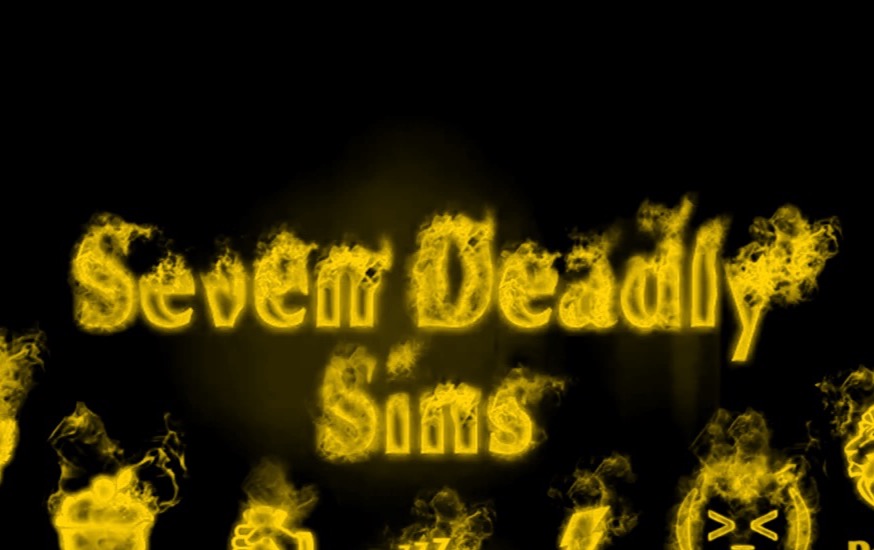


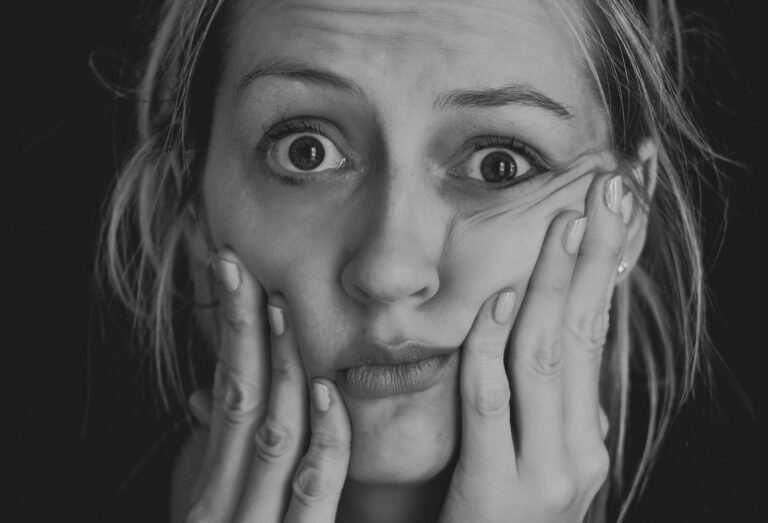
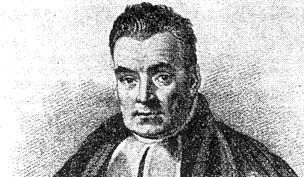
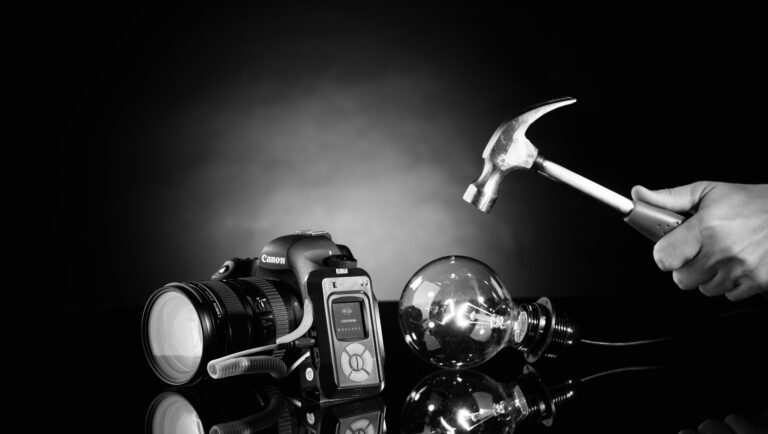
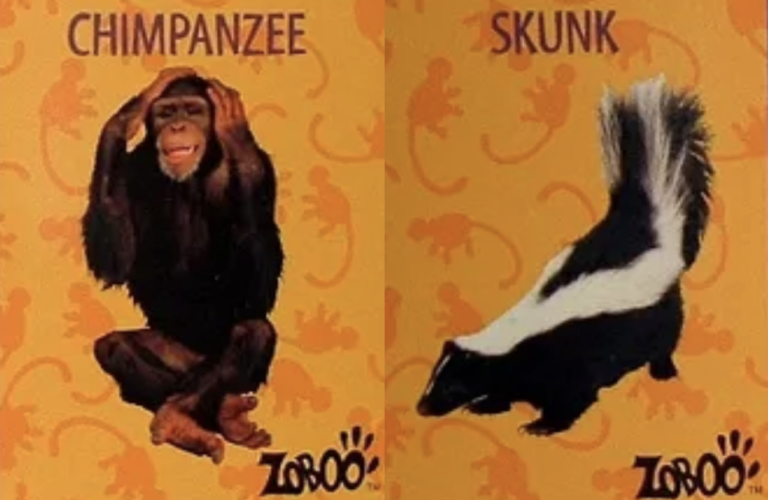
Hmmm is anyone else encountering problems with the images on this blpog loading?
I’m trying to figure out iif its a problem
on my end or if it’s the blog. Any suggestions would be greatly appreciated.
Here is my webpage Roosevelt